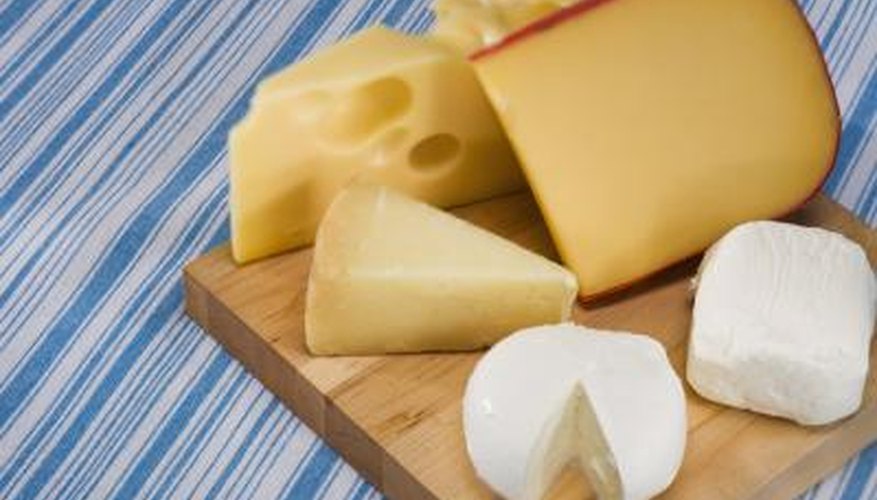If you're a cheese connoisseur and are serving a cheese board, it is important that you use the right slicing and cutting techniques to stop your cheese from crumbling. Different kinds of cheese served on a cheese board should complement each other. You should have a variety of soft and hard cheeses from which to choose. Because each cheese will slice differently, this information needs to be taken into account so that you can correctly arrange your board, knives and cheese slicers.
Take your cheese out of the fridge and leave for one or two hours at room temperature. Cheese should not be served straight from the fridge.
Place your Roquefort cheese or any soft cheese you are serving in your Roquefortaise slicer. This device will slice through the cheese with a wire.
- If you're a cheese connoisseur and are serving a cheese board, it is important that you use the right slicing and cutting techniques to stop your cheese from crumbling.
- Place your Roquefort cheese or any soft cheese you are serving in your Roquefortaise slicer.
Push straight down on the handle of the Roquefortaise. This will give you a clean straight cut through your soft cheese. The cheese will not stick as you are cutting with a wire, rather than a knife.
Place your soft cheese on the cheese board. Use the double prong at the top of the knife to adjust the cheese to the right position for cutting. Do not use your fingers.
- Push straight down on the handle of the Roquefortaise.
- Use the double prong at the top of the knife to adjust the cheese to the right position for cutting.
Place your knife in a bowl of hot water. This will warm the knife and prevent the cheese from sticking to it.
Place the bottom of the serrated area of the knife at the point on the cheese where you are going to start your cut.
Use the double prong to pick up the cheese and place it on your plate, cheese biscuit or cracker.
Place your cheese on the cheese board making sure there is enough space around it to use your double-handled knife. The double-handled knife has the blade in the middle and a handle on each side of the blade. Sometimes the blade is curved on this type of knife. The double-handled knife is used to cut hard cheeses.
Run your blade through hot water to ensure that the cheese does not stick.
- Place the bottom of the serrated area of the knife at the point on the cheese where you are going to start your cut.
- Run your blade through hot water to ensure that the cheese does not stick.
Hold the knife in both hands, with one hand on either handle. Decide where you want to make the cut in the cheese.
Press down firmly but gently and the blade should slide through the cheese easily without it crumbling or sticking.
TIP
Taking your cheese out of the fridge and cutting at room temperature will help prevent the cheese from crumbling. Use the correct knife for each cheese and lay out knives accordingly, or pre-cut cheese for your cheese board.
WARNING
Always be careful when using sharp knives, keep the blade away from your body and do not place fingers on the cheese. Always store cheese in the fridge, think of it like wine in that it needs to breathe and warm up prior to eating.
